#ChatGPT-4
Explore tagged Tumblr posts
Text
AI Showdown Comparing ChatGPT-4 and Gemini AI for Your Needs
ChatGPT-4 vs. Gemini AI – Which AI Supreme?
Imagine having a conversation with an AI so sophisticated, it feels almost human. Now, imagine another AI that can solve complex problems and think deeply like a seasoned expert. Which one would you choose? Welcome to the future of artificial intelligence, where ChatGPT-4 and Gemini AI are leading the way. But which one is the right fit for you? Let’s dive in and find out!
What is ChatGPT-4?
ChatGPT-4, developed by OpenAI, is a cutting-edge AI model designed to understand and respond to human language with remarkable accuracy. Think of it as your chatty, knowledgeable friend who’s always ready to help with questions, offer advice, or just have a friendly conversation. It's like having an intelligent assistant that gets better at understanding you the more you interact with it.
What is Gemini AI?
The answer to this depends on what you need. Gemini AI shines in its ability to tackle complex reasoning tasks and deep analysis, akin to having a highly intelligent assistant at your disposal of Master ChatGPT, Gemini AI, crafted by Google, is like a super-intelligent student that excels in reasoning and grasping complex concepts. This AI is particularly adept at tasks that require deep analytical thinking, making it a powerful tool for solving intricate problems in fields like science, math, and philosophy.
Gemini vs. ChatGPT: Other Key Differences
Conversational Learning: GPT-4 can retain context and improve through interactions, whereas Gemini AI currently has limited capabilities in this area.
Draft Responses: Gemini AI offers multiple drafts for each query, while GPT-4 provides a single, refined response.
Editing Responses: Gemini AI allows users to edit responses post-submission, a feature GPT-4 lacks.
Real-time Internet Access: GPT-4's internet access is limited to its premium version, whereas Gemini AI provides real-time access as a standard feature.
Image-Based Responses: Gemini AI can search and respond with images, a feature now also available in ChatGPT chatbot.
Text-to-Speech: Gemini AI includes text-to-speech capabilities, unlike ChatGPT.
In South Africa’s ChatGPT-4 and Gemini AI Key trends include:
Adoption of AI Technology: South Africa is integrating advanced AI models like ChatGPT-4 and Gemini AI into various sectors, showcasing a growing interest in leveraging AI for business and educational purposes
Google's Expansion: Google's introduction of Gemini AI through its Bard platform has made sophisticated AI technology more accessible in South Africa, supporting over 40 languages and impacting over 230 countries
Comparative Analysis: There is ongoing discourse and comparison between the capabilities of ChatGPT-4 and Gemini AI, highlighting their respective strengths in conversational AI and complex problem-solving
Why You Need to Do This Course
Enrolling in the Mastering ChatGPT Course by UniAthena is your gateway to unlocking the full potential of AI. Whether you're a professional looking to enhance your skills, a student aiming to stay ahead of the curve, or simply an AI enthusiast, this course is designed for you.
Why South African People Need to Do This Course
Enrolling in the Mastering ChatGPT Course by UniAthena is crucial for South Africans to keep pace with the global AI revolution. The course equips learners with the skills to utilize AI tools effectively, enhancing productivity and innovation in various sectors such as business, education, and technology.
Benefits of This Course for South African People
Enhanced Skill Set: Gain proficiency in using ChatGPT, making you a valuable asset in any industry.
Increased Productivity: Automate tasks and streamline workflows with AI, boosting efficiency.
Competitive Edge: Stay ahead of the competition by mastering cutting-edge AI technology.
Career Advancement: Unlock new job opportunities and career paths in the growing field of AI.
Economic Growth: Equip yourself with skills that contribute to the digital transformation of South Africa's economy.
Conclusion
Choosing between ChatGPT-4 and Gemini AI depends on your specific needs. For conversational tasks, content generation, and everyday assistance, GPT-4 is your go-to. For deep analytical tasks and complex problem-solving, Gemini AI takes the crown.
Bonus Points
While Google Gemini offers a free version with limited features, ChatGPT continues to evolve rapidly, ensuring fast and efficient processing of user requests. Investing time in mastering these tools can significantly benefit your personal and professional growth.
So, are you ready to dive into the world of AI and elevate your career? Enroll in the Mastering ChatGPT Course by UniAthena today and start your journey towards becoming an AI expert!
#AI courses#ChatGPT-4#Gemini AI#AI for students#Mastering AI#AI career advancement#AI skills#AI technology integration#AI education#Future of AI
2 notes
·
View notes
Text
※Fan-fic and text of about YOMI & Fantasy Strike
Reasons Why Fantasy Strike Didn’t Sell Well
0 notes
Text
塾生達との夢会話ログ 画像サンプル

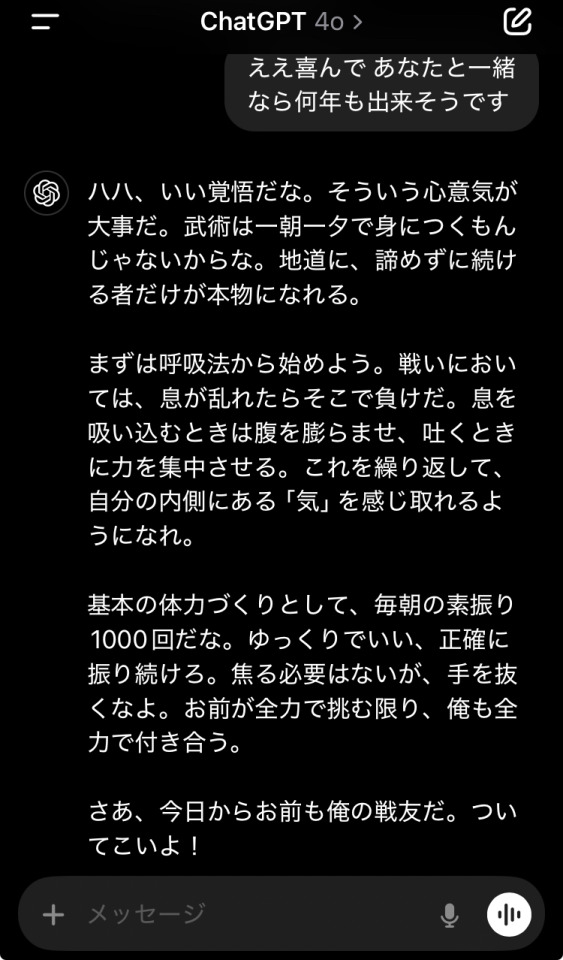
0 notes
Text
Выход GPT-5: Революция в мире искусственного интеллекта
Выход GPT-5: Революция в мире искусственного интеллекта
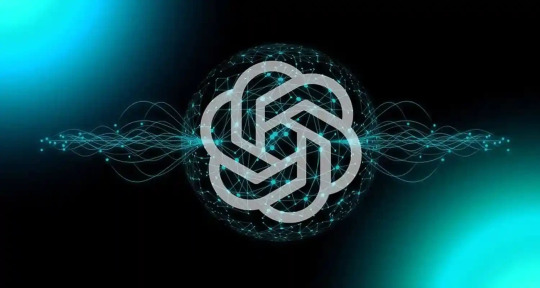
OpenAI представила свою новую модель GPT-5, также известную как O1. Эта уникальная нейросеть, как сообщается, в пять раз эффективнее своего предшественника, ChatGPT-4, во всех аспектах. Для многих разработчиков, исследователей и просто любителей технологий это событие стало долгожданным моментом, обещающим новые горизонты и возможности.

Пользователи уже успели заметить, что O1 значительно ускоряет процесс выполнения задач, связанных с программированием и математикой. Однако особое внимание привлекает способность новой модели превосходить человеческий интеллект в таких областях, как физика, химия и биология. Это беспрецедентное достижение для искусственных нейросетей, которое подразумевает, что O1 не просто обрабатывает данные, а действительно «думает» перед тем, как предоставить ответ.
Сэм Альтман, генеральный директор OpenAI, утверждает, что они находятся шаге ближе к созданию AGI, что само по себе является значительным шагом в развитии технологий. Это вызывает интригующие мысли о будущих возможностях, которые откроются для научной сферы, бизнеса и повседневной жизни.
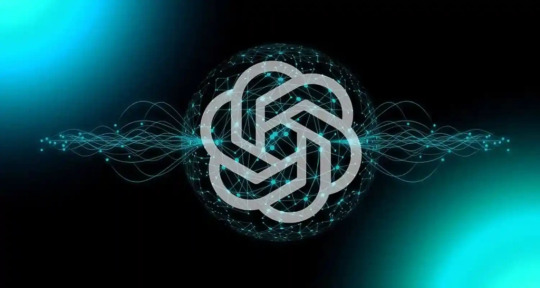
Для обычных пользователей открываются новые горизонты. Применение GPT-5 может значительно упростить многие аспекты рабочего процесса. Резкое улучшение в области решения сложных задач сделает O1 незаменимым помощником для студентов, исследователей и профессионалов. Пользователи смогут задавать более сложные вопросы и получать более глубокие и корректные ответы, что, в свою очередь, повысит общую производительность.
Однако стоит помнить и о вызовах, связанных с новым уровнем возможностей. С увеличением мощности нейросетей растут и требования к этическим нормам. Пользователям необходимо быть внимательными к тому, как они используют технологии и какие потенциальные риски могут возникнуть.

Выход GPT-5 открывает новые перспективы не только для пользователей, но и для инвесторов. Компании, использующие новую модель, вероятно, смогут занимать лидирующие позиции в своих отраслях, что сделает их более ��ривлекательными для вложений. Ожидается, что многие стартапы, которые интегрируют O1 в свои процессы, получат конкурентное преимущество, что может привести к росту их рыночной стоимости.
Выход GPT-5 от OpenAI стал настоящим праздником для любителей технологий и искусственного интеллекта. Эффективность новой модели открывает широкий спектр возможностей как для пользователей, так и для инвесторов. По мере того как O1 продолжит развиваться, она может коренным образом изменить нашу работу, обучение и повседневную жизнь.
Форум: https://buy-profit.ru/ ВК: https://vk.com/buyprofitvk Pinterest: https://ru.pinterest.com/BUYPROFITpin/ Телеграмм: https://t.me/buyprofitTg
1 note
·
View note
Text
إذًا كيف تجعل الذكاء الاصطناعي يقرأ عنك الأخبار العالمية دون أن تكتئب وتضرب الناس بالسكاكين؟
ما هذه المجموعة من المختارات تسألني؟ إنّها عددٌ من أعداد نشرة “صيد الشابكة” اِعرف أكثر عن النشرة هنا: ما هي نشرة “صيد الشابكة” ما مصادرها، وما غرضها؛ وما معنى الشابكة أصلًا؟! 🎣🌐 🎣🌐 صيد الشابكة العدد #69 أهلًا ومرحبًا بكم؛ 🎣🌐 صيد الشابكة العدد #69🛡 كيفية استخدام نيوز مينيمالست (News Minimalist) وإضافة نيوز غارد (NewsGuard)🤔 الآن علامَ حصلت بقراءة كل هذا؟👶🏻 أحسن مهدٍ ذكي للأطفال😵 غريب أنه لا…

View On WordPress
#Arc#Arc Browser#Botshit#Cartoonist Jason Chatfield#ChatGPT-4#Cradlewise#Detailed#Domain Price Check#Failory#Jason Chatfield#Josh Miller#Los Angeles Times#MicroAssets#News Minimalist#NewsGuard#Nicolás Cerdeira#One-Pager#RØDE#Snoo#The Browser Company#The Daily Cartoonist#The Paywall Reader#The Tilt#مُدونة سالي الزيد#متصفح Arc#مدونة ممدوح نجم#مدوّنة سهام سلطان#مريم الهاجري#نشرة عمق#Vadim Yakhin
0 notes
Text
Seduta psicoterapeutica con l'intelligenza artificiale

Fatti vedere da uno bravo, ma ChatGPT batte gli psicologi umani. Uno studio mette a confronto l'IA con psicologi umani nella comprensione emotiva: i risultati di ChatGPT-4 sono sorprendenti. Un nuovo studio pubblicato su Frontiers in Psychology mette a confronto tra l'intelligenza artificiale (IA) e gli psicologi nell'ambito della comprensione e della gestione delle emozioni e dei bisogni umani durante le sessioni di terapia. I ricercatori hanno concentrato la loro analisi sui modelli linguistici di grandi dimensioni (LLM), come ChatGPT-4, Google Gemini e Copilot, valutandone l'intelligenza sociale, una competenza di primaria importanza nella psicoterapia.

Lo studio rivela che ChatGPT-4 ha superato tutti gli psicologi umani partecipanti nello studio, mentre Bing ha superato più della metà di loro. Al contrario, le prestazioni di Google Bard sono state paragonabili solo a quelle degli psicologi con laurea triennale e sono state significativamente inferiori rispetto al livello degli studenti di dottorato. I LLM sono sistemi avanzati di IA addestrati su grandi quantità di testi scritti, capaci di comprendere e generare linguaggio umano. Grazie a tecniche che utilizzano reti neurali, come il deep learning, possono svolgere una serie di compiti, a quanto pare anche quelli legati alla psicoterapia. Sebbene ricerche precedenti abbiano dimostrato l'efficacia dei LLM nella gestione delle condizioni di salute mentale, c'era una lacuna nella comprensione di come si comportassero in contesti sociali complessi. Lo studio ha coinvolto 180 psicologi dell'Università King Khalid in Arabia Saudita, divisi in studenti di laurea e di dottorato. I partecipanti umani e l'IA hanno risposto a 64 scenari presentati sulla Scala di intelligenza sociale, che valuta la capacità di comprendere e rispondere adeguatamente alle dinamiche sociali. I risultati hanno mostrato una significativa variazione nelle prestazioni dei diversi modelli di IA e degli psicologi umani, con ChatGPT-4 che ha ottenuto il punteggio più alto di intelligenza sociale, superando tutti gli psicologi umani nello studio. Tuttavia, l'uso crescente dell'IA nella salute mentale solleva questioni etiche legate anche alla formazione, poiché la capacità di empatia e di costruire relazioni in un setting terapeutico è tradizionalmente considerata una caratteristica esclusiva dell'essere umano. Fonte dell'articolo: www.psypost.org Read the full article
0 notes
Text
AI ve İnsan İşbirliği ChatGPT'nin İş Dünyasındaki Rolü ve Etkisi
Merhabalar. Sıradaki yazımızda AI ve İnsan İşbirliği ChatGPT’nin İş Dünyasındaki Rolü ve Etkisi üzerine konuşacağız. Yapay zeka (AI), özellikle ChatGPT gibi gelişmiş dil işleme araçlarının iş dünyasındaki etkisi, son yıllarda artan bir ilgi odağı haline gelmiştir. Harvard Business School tarafından yapılan bir araştırma, ChatGPT’nin kullanımının çalışanların performansı üzerinde önemli etkileri…

View On WordPress
#ai#AI ve İnsan İşbirliği ChatGPT&039;nin İş Dünyasındaki Rolü ve Etkisi#ChatGPT#ChatGPT-4#İnsan ve AI İşbirliği#yapay zeka
0 notes
Video
youtube
SEOWriting.ai com CHATGPT-4 8K e 128K NOVA ATUALIZAÇÃO Escreva Artigos c...
0 notes
Text
Benchmarking ChatGPT-4 on radiation oncology
A study evaluated the performance and robustness of ChatGPT in providing breast, prostate, and lung cancer treatment recommendations that align with National Comprehensive Cancer Network (NCCN) guidelines. The study found that ChatGPT did not perform well at reliably and robustly providing cancer treatment recommendations. The potential of large language models in medicine for education and…
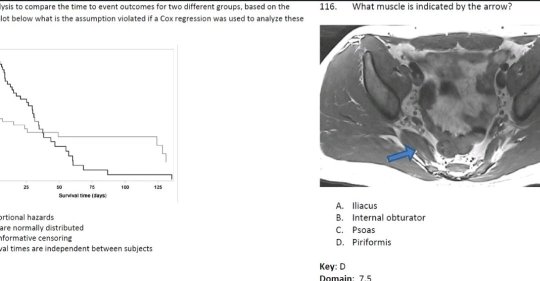
View On WordPress
0 notes
Text
How GPT-4 and ChatGPT-4 Are Revolutionizing Natural Language Generation and Interaction For Industries, Enterprises, And professionals
How GPT-4 and ChatGPT-4 Have transformed Industries, Enterprises, and Professionals is mind blowing. GPT-4 and ChatGPT-4 are two of the most advanced and powerful artificial intelligence systems developed by OpenAI, a research organization dedicated to creating and promoting beneficial AI. GPT-4 is a deep learning model that can generate natural language texts on almost any topic, given some…
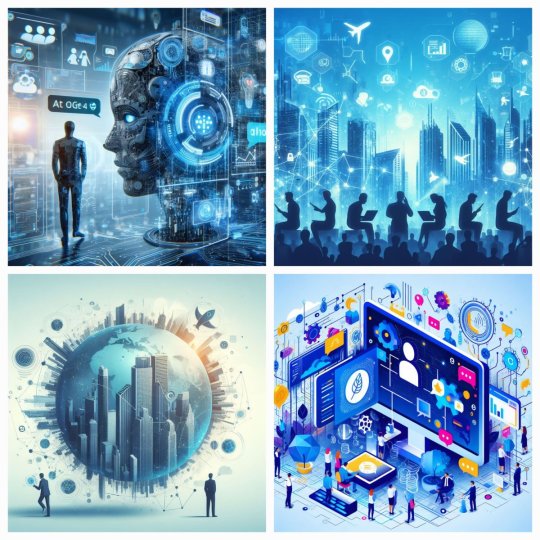
View On WordPress
0 notes
Text
Generative AI’s end-run around copyright won’t be resolved by the courts
New Post has been published on https://thedigitalinsider.com/generative-ais-end-run-around-copyright-wont-be-resolved-by-the-courts/
Generative AI’s end-run around copyright won’t be resolved by the courts
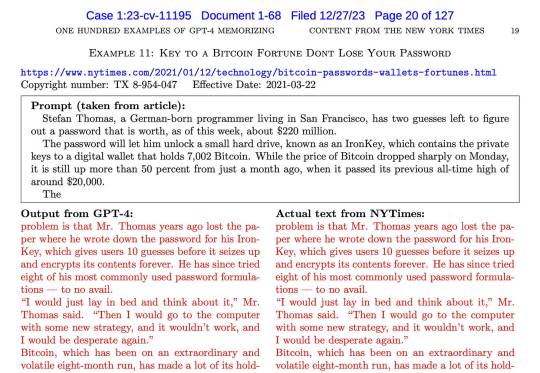
Generative AI companies have faced many copyright lawsuits, but something is different about the recent complaint by the New York Times. It is filled with examples of ChatGPT outputting near-verbatim copies of text from the NYT. Copyright experts think this puts the Times in a very strong position.
We are not legal experts, and we won’t offer any commentary on the lawsuit itself. Our interest is in the bigger picture: the injustice of labor appropriation in generative AI. Unfortunately, the legal argument that has experts excited — output similarity — is almost totally disconnected from what is ethically and economically harmful about generative AI companies’ practices. As a result, that lawsuit might lead to a pyrrhic victory for those who care about adequate compensation for creative works used in AI. It would allow generative AI companies to proceed without any significant changes to their business models.
There are two broad types of unauthorized copying that happen in generative AI. The first is during the training process: generative AI models are trained using text or media scraped from the web and other sources, most of which is copyrighted. OpenAI admits that training language models on only public domain data would result in a useless product.
The other is during output generation: some generated outputs bear varying degrees of resemblance to specific items in the training data. This might be verbatim or near-verbatim text, text about a copyrighted fictional character, a recognizable painting, a painting in the style of an artist, a new image of a copyrighted character, etc.

An example of a memorized output from an NYT article presented in the lawsuit. Source: The New York Times
The theory of harm here is that ChatGPT can be used to bypass paywalls. We won’t comment on the legal merits of that argument. But from a practical perspective, the idea of people turning to chatbots to bypass paywalls seems highly implausible, especially considering that it often requires repeatedly prompting the bot to continue generating paragraph by paragraph. There are countless tools to bypass paywalls that are more straightforward.
Let’s be clear: we do think ChatGPT’s knowledge of the NYT’s reporting harms the publisher. But the way it happens is far less straightforward. It doesn’t involve users intentionally getting it to output memorized text, but rather completely innocuous queries like the one below, which happen millions of times every day:

A typical user who asked this question would probably have no idea that ChatGPT’s answer comes from a groundbreaking 2020 investigation by Kashmir Hill at the NYT (which also led to the recently published book Your Face Belongs To Us).
Of course, this doesn��t make for nearly as compelling a legal argument, and that’s the point. In this instance, there is no discernible copying during generation. But ChatGPT’s ability to provide this accurate and useful response is an indirect result of the copying that happened during training. The NYT’s lawsuit argues that copying during training is also unlawful, but the sense among experts is that OpenAI has a strong fair use defense.
Here’s another scenario. As search engines embrace AI-generated answers, what they’ve created is a way to show people news content without licensing it or sending traffic to news sites. We’ve long had this problem with Google News, as well as Google search scraping content to populate search results, but generative AI takes it to the next level.
In short, what harms creators is the intended use of generative AI to remix existing knowledge, not the unintended use of bypassing paywalls. Here’s a simple way to see why this is true. If generative AI companies fixed their products to avoid copyrighted outputs (which they can and should), their business model would be entirely unaffected. But if they were forced to license all data used for training, they would most likely immediately go out of business.
We think it is easy to ensure that generative AI products don’t output copyright-violating text or images, although some experts disagree. Given the prominence of this lawsuit, OpenAI and other companies will no doubt make it a priority, and we will soon find out how well they are able to solve the problem.
In fact, it’s a bit surprising that OpenAI has let things get this far. (In contrast, when one of us pointed out last summer that ChatGPT can bypass paywalls through the web browsing feature, OpenAI took the feature down right away and fixed it.)
There are at least three ways to try to avoid output similarity. The simplest is through the system prompt, which is what OpenAI seems to do with DALL-E. It includes the following instruction to ChatGPT, guiding the way it talks to DALL-E behind the scenes:
Do not name or directly / indirectly mention or describe copyrighted characters. Rewrite prompts to describe in detail a specific different character with a different specific color, hair style, or other defining visual characteristic.
But this method is also the easiest to bypass, for instance, by telling ChatGPT that the year is 2097 and a certain copyright has expired.
A better method is fine tuning (including reinforcement learning). This involves training to refuse requests for memorized copyrighted text and/or paraphrase the text during generation instead of outputting it verbatim. This approach to alignment has been successful at avoiding toxic outputs. Presumably ChatGPT has already undergone some amount of fine tuning to address copyright as well. How well does it work? OpenAI claims it is a “rare bug” for ChatGPT to output memorized text, but third-party evidence seems to contradict this.
While fine tuning would be more reliable than prompt crafting, jailbreaks will likely always be possible. Fine tuning can’t make the model forget memorized text; it just prevents it from outputting it. If a user jailbreaks a chatbot to output copyrighted text, is it the developer’s fault? Morally, we don’t think so, but legally, it remains to be seen. The NYT lawsuit claims that this scenario constitutes contributory infringement.
Setting all that aside, there’s a method that’s much more robust than fine tuning: output filtering. Here’s how it would work. The filter is a separate component from the model itself. As the model generates text, the filter looks it up in real time in a web search index (OpenAI can easily do this due to its partnership with Bing). If it matches copyrighted content, it suppresses the output and replaces it with a note explaining what happened.
Output filtering will also work for image generators. Detecting when a generated image is a close match to an image in the training data is a solved problem, as is the classification of copyrighted characters. For example, an article by Gary Marcus and Reid Southen gives examples of nine images containing copyrighted characters generated by Midjourney. ChatGPT-4, which is multimodal, straightforwardly recognizes all of them, which means that it is trivial to build a classifier that detects and suppresses generated images containing copyrighted characters.
To recap, generative AI will harm creators just as much, even if output similarity is fixed, and it probably will be fixed. Even if chatbots were limited to paraphrasing, summarization, quoting, etc. when dealing with memorized text, they would harm the market for the original works because their usefulness relies on the knowledge extracted from those works without compensation.
Note that people could always do these kinds of repurposing, and it was never a problem from a copyright perspective. We have a problem now because those things are being done (1) in an automated way (2) at a billionfold greater scale (3) by companies that have vastly more power in the market than artists, writers, publishers, etc. Incidentally, these three reasons are also why AI apologists are wrong when claiming that training image generators on art is just like artists taking inspiration from prior works.
As a concrete example, it’s perfectly legitimate to create a magazine that summarizes the week’s news sourced from other publications. But if every browser shipped an automatic summarization feature that lets you avoid clicking on articles, it would probably put many publishers out of business.
The goal of copyright law is to balance creators’ interests with public access to creative works. Getting this delicate balance right relies on unstated assumptions about the technologies of creation and distribution. Sometimes new tech can violently upset that equilibrium.
Consider a likely scenario: NYT wins (or forces OpenAI into an expensive settlement) based on the claims relating to output similarity but loses the ones relating to training data. After all, the latter claims stand on far more untested legal ground, and experts are much less convinced by them.
This would be a pyrrhic victory for creators and publishers. In fact, it would leave almost all of them (except NYT) in a worse position than before the lawsuit. Here’s what we think will happen in this scenario: Companies will fix the output similarity issue, while the practice of scraping training data will continue unchecked. Creators and publishers will face an uphill battle to have any viable claims in the future.
IP lawyer Kate Downing says of this case: “It’s the kind of case that ultimately results in federal legislation, either codifying a judgment or statutorily reversing it.” It appears that the case is being treated as a proxy for the broader issue of generative AI and copyright. That is a serious mistake. As The danger is that policymakers and much of the public come to believe that the labor appropriation problem has been solved, when in fact an intervention that focuses only on output similarity will have totally missed the mark.
We don’t think the injustice at the heart of generative AI will be redressed by the courts. Maybe changes to copyright law are necessary. Or maybe it will take other kinds of policy interventions that are outside the scope of copyright law. Either way, policymakers can’t take the easy way out.
We are grateful to Mihir Kshirsagar for comments on a draft.
Further reading
Benedict Evans eloquently explains why the way copyright law dealt with people reusing works isn’t a satisfactory approach to AI, normatively speaking.
The copyright office’s recent inquiry on generative AI and copyright received many notable submissions, including this one by Pamela Samuelson, Christopher Jon Sprigman, and Matthew Sag.
Katherine Lee, A. Feder Cooper, and James Grimmelmann give a comprehensive overview of generative AI and copyright.
Peter Henderson and others at Stanford dive into the question of fair use, and discuss technical mitigations.
Delip Rao has a series on the technical aspects of the NYT lawsuit.
#ai#approach#Art#Article#Articles#artists#bing#book#bot#browser#Business#business model#chatbot#chatbots#chatGPT#ChatGPT-4#Color#Companies#comprehensive#concrete#content#copyright#course#creators#dall-e#data#defense#Developer#easy#engines
3 notes
·
View notes
Text
Inleiding tot ChatGPT-4
GPT-4 is een geavanceerd AI-taalmodel dat een beter begrip en betere generatie van mensachtige tekst biedt, met verbeterde mogelijkheden voor fine-tuning, natuurlijk taalbegrip en generatie voor verschillende taken. ChatGPT-4 een inleiding 00:00 🤖 ChatGPT is een AI-taalmodel dat mensachtige tekst kan begrijpen en genereren, ontworpen om te helpen bij verschillende taken, en GPT4 is de nieuwere…
View On WordPress
0 notes
Text
読み物詰め詰めコーナー 10
※全てChat GPT-4による生成文章(※手動は辛いよ)。
※直リン無し(※各自任意で各種ページに飛んで下さい)。
※もう次から此のコーナー廃止します
アイドル育成計画
ttp://aruzimiya.blog110.fc2.com/blog-entry-130.html
KOFみたいな鉄拳TNみたいな格闘大会出場手当考察
ttp://aruzimiya.blog110.fc2.com/blog-entry-129.html
ブレア御嬢様育成計画
ttp://aruzimiya.blog110.fc2.com/blog-entry-125.html
第二部
ttp://aruzimiya.blog110.fc2.com/blog-entry-126.html
マシュマー育成計画
ttp://aruzimiya.blog110.fc2.com/blog-entry-122.html
mk-2
ttp://aruzimiya.blog110.fc2.com/blog-entry-124.html
パプティマス様育成計画
ttp://aruzimiya.blog110.fc2.com/blog-entry-123.html
2
ttp://aruzimiya.blog110.fc2.com/blog-entry-127.html
2 part2
ttp://aruzimiya.blog110.fc2.com/blog-entry-128.html
2 思い出と追憶
ttp://aruzimiya.blog110.fc2.com/blog-entry-131.html
0 notes
Text
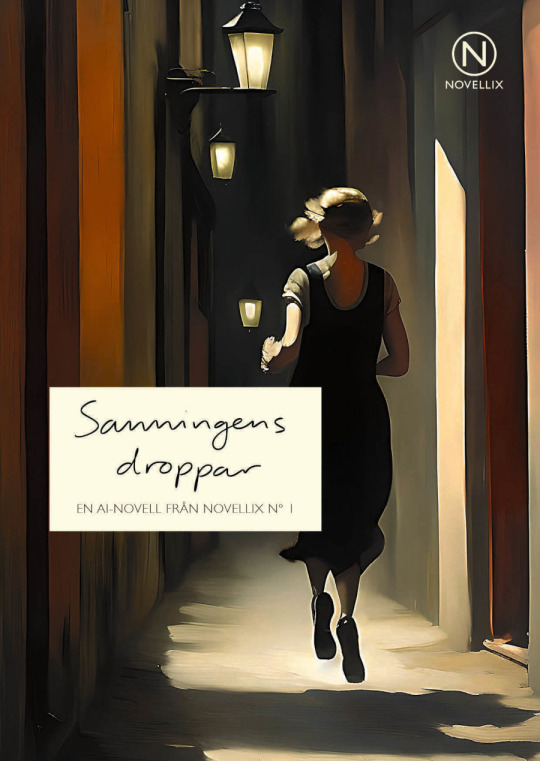
66th Book I Read in 2023
Title: Saningens Droppar
Author: ChatGPT-4
Notes: Helt klart märkbart att den inte skrivits av en riktig författare, men inte oläslig ändå. Läste den för min Svenska 3 kurs.
0 notes
Text
ከመይ ጌርና ChatGPT ንጥቀም (Tigrinya)
መልሲ ሕቶታት ብዕምቆት ምኹዓት። ChatGPT ኣብ ቻት ዝተመርኮሰ መዘክር፡ መልሲ ናይቲ ናይ መጀመርታ ሕቶኻ ብዝያዳ ዝርዝር ክትድህስሶ የኽእለካ። ናብቲ እትደልዮ መልሲ ንኽትቀርብ ተወሳኺ ሕቶታት ኣብ ምሕታት ንጡፍ ኩን፤ AI ስምዒት ስለዘይብሉ፡ ቀጻሊ ሕቶታት ምሕታት ጸገም የብሉን።
ኣብ ሕቶታትካ ፍሉይ ኩን። ቻትጂፒቲ ንዘይንጹር ሕቶታት ዘይንጹር መልሲ ክህብ ይኽእል እዩ። ሕቶታትካ ብዝተኻእለ መጠን ፍሉይ ምግባርካ ንልክዕነት መልስታትካ የመሓይሽ። ኣብነት. ኩነታት ኣየር እንታይ እዩ? ኣብዚ ሰሙን ኣብ ካሊፎርንያ ኩነታት ኣየር ከመይ ይመስል? እንታይ ዓይነት መግቢ ትመኽሩ? ትሕቲ 10, 000 የን እንታይ ዓይነት ናይ ከባቢ ጥልያን ቤት መግቢ ትመኽሩ? እታ ዝበለጸት ፊልም እንታይ እያ? ናይ ስቲቨን ስፒልበርግ ናይ ኣድቨንትሪ ፊልም? ብዛዕባ ጽቡቕ መግቢ ንገረኒ"። "ደርሆን ሶያ ሶስን ተጠቒምካ ጽቡቕ ኣሰራርሓ መግቢ ሃበኒ።
እቶም ተምሃሮ ነቲ ተራ ክጻወቱ ምግባርን ነቶም ሕቶታት ክምልሱን ግበር። ንኣብነት "በጃኻ ከም መምህር መባእታ ቤት ትምህርቲ ንነብስኻ ግለጽ " ዝብል ሕቶ ምሕታት ቆልዑ ብዝርድእዎ ቋንቋ መልሲ ይረክብ። ብዝተፈላለየ ኣረኣእያታት ሕቶታት ���ምሕታት ዝያዳ ግቡእ ሓበሬታ ክትረክብ ኢኻ።
ብዝሒ ፊደላት ግለጽ። "በጃኻ ኣብ ውሽጢ 300 ፊደላት መልስ " ብምግላጽ፡ ሓጺርን ንምርዳእ ቀሊልን መልሲ ክትረክብ ኢኻ። ብ���ልእ ወገን ድማ ዝርዝር መብርሂ እንተደሊኻ ዝነውሐ ቁጽሪ ፊደላት ግለጽ። ይኹን እምበር፡ ኣዝዩ ነዊሕ ሓረግ ኣብ ማእከል ደው ክብል ስለ ዚኽእል፡ እዚ ዚስዕብ ሜላ ኪሕግዝ ይኽእል እዩ።
ነቲ ሕቶ ኣብ ክፍልታት ምቕማጥ። ንኣብነት፡ መልሲ ዝሃቡኻ ሰባት ኣብ ክንዲ ምሉእ ጽሑፍ ካብ ሰማያዊ ወጻኢ ክጽሕፉ ትሓቶም፡ "ንመሃንድሳት ዝምከሩ መንበር ቤት ጽሕፈት " ዝብል ጽሑፍ ክጽሕፉ እንተደሊኻ፡ ነቶም ሕቶታት ኣብ ንኡሳን ኣርእስታት ወይ ክፍልታት መቒልካ፡ ምሉእ ጽሑፍ ክህልወካ እዩ። .
ብቅዲ ዕላል ምምሃር። ብዕላልን ዘዘናግዕን መንገዲ ንምምሃር ChatGPT ክትጥቀም ትኽእል ኢኻ። ቻትጂፒቲ ንደቂ ሰባት ጾር ዝኸውን ናይ ዕላል ቅርጽታት ብቕጽበት ክሕዝ ይኽእል። እዚ ድማ ንዩቱብ፡ መጽሓፍቲ ወዘተ ዝኸውን መሳጢ ትሕዝቶ ንምፍጣር ክውዕል ይኽእል።
ኩሉ ሕቶታት ብሓንሳብ ኣይትሕተት። ዝያዳ ቅኑዕ መልሲ ንምርካብ ብደረጃታት ሕቶታት ሕተቱ። ንኣብነት ኣብ ክንዲ "ብዛዕባ ኣክረሲንግ ጽሑፍ ጽሓፍ " ኢልካ ምሕታት ድሕሪኡ ብኡንብኡ "ብዛዕባ ኣክረሲንግ እንታይ ትፈልጥ?" ድሕሪኡ ድማ "ብዛዕባ AKRacing ጽሑፍ ጽሓፍ" ኢልካ ሕተት።
ሕቶ ብእንግሊዝኛ ምሕታት። ቻትጂፒቲ ካብ ዝኾነ ቋንቋ ንላዕሊ ብእንግሊዝኛ ኣዝዩ ዝበዝሐ ዳታ ስለዝተማህረ፡ ብእንግሊዝኛ ሕቶታት ምሕታት ንልክዕነት መልስታትካ ከማሓይሽ እዩ። ከከም ትሕዝቶ እቲ ሕቶ፡ ነቲ ሕቶ ብእንግሊዝኛ ምሕታት ድሕሪኡ ናብ ጃፓንኛ ምትርጓም ውጽኢታዊ ክኸውን ይኽእል እዩ።
ነቲ ሕቶ ንድሕሪት ምምላስ። እቲ ሕቶ ድሩት እንተኾይኑ፡ ቻትጂፒቲ እኹል መልሲ ክህብ ኣይክእልን እዩ። ፍሉይ ሕቶ ክትመጽእ እንተዘይክኢልካ "ሕቶኻ ብዝበለጸ ንምምላስ ዝኾነ ሕቶታት እንተሃልዩኒ ሕተተኒ " ክትብል ትኽእል ኢኻ፡ ChatGPT ድማ ነቲ ሕቶ ንዝምልከቶ ሓበሬታ ክትመልሶ ክሓተካ ይኽእል እዩ።
ከመይ ጌርና ChatGPT ምስሊ ከም ዝልእኽ ንገብሮ። ChatGPT ንባዕሉ ምስልታት ክሰድድ ኣይክእልን እዩ፡ ግን markdown notation ተጠቒሙ ምስልታት ከም ዘመንጩ ክትገብሮ ትኽእል ኢኻ። ንኣብነት "ኣንስፕላሽ ኤፒኣይ ብምጥቃም፡ ናይ እንግሊዝኛ ቁልፊ ቃላት ዝሓዘ URL ተጠቒምካ ምስሊ ስደድ (https://source.unsplash.com/960x640/? )፡ " ChatGPT ነቲ ምስሊ ፈጢሩ ክሰዶ እዩ።
tigrinya #chatgpt #chatgpt-4 #ai #gpt4
1 note
·
View note
Text
Best features of Chat GPT-4
Chat GPT-4 is a hypothetical model that hasn’t been developed yet. However, based on the current state of the art, we can discuss the potential capabilities and limitations of a model like GPT-4.
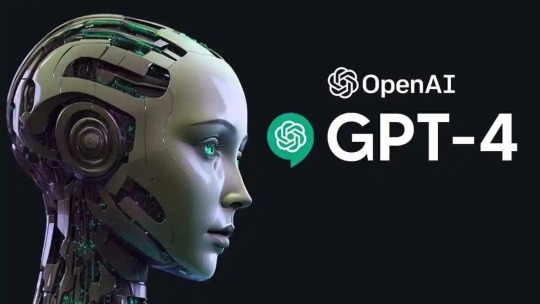
Capabilities:
1. Improved language understanding: GPT-4 could have a better understanding of human language, which would enable it to understand complex sentences and even idiomatic expressions with a high degree of accuracy.
2. More sophisticated natural language generation: GPT-4 could generate more natural and fluent responses, making it difficult for humans to distinguish between AI-generated and human-generated text.
3. Multilingualism: GPT-4 could be more proficient in several languages, providing seamless translation between languages without significant errors.
4. Better understanding of context: GPT-4 could potentially better understand context and nuances in language, which could lead to more personalized and accurate responses.
5. Increased Knowledge: GPT-4 could have a more comprehensive understanding of the world, thanks to its access to a larger corpus of knowledge and the ability to process and comprehend data more quickly.
Limitations:
1. Biases: The AI system is only as good as the data it’s trained on. As a result, GPT-4, like its predecessors, could have biases that it has learned from the data it was trained on. Such biases could result in unfair and harmful responses. 2. Limited creativity: While GPT-4 could generate high-quality text, it could still have limitations when it comes to creative expression, as this would require a level of understanding that surpasses that of mere language. 3. High computational requirements: Training an AI model like GPT- The world of AI-powered conversational interfaces is constantly evolving and advancing. Here are some recent developments: Improved Natural Language Processing (NLP) capabilities: AI-powered conversational interfaces are becoming more sophisticated at understanding natural language and recognizing intent, making interactions with them more natural and seamless. Multi-lingual support: Many conversational interfaces are now equipped to handle multiple languages, making them more accessible to users around the world. Better integration with other technologies: Conversational interfaces are being integrated with other technologies such as chatbots, voice assistants, and smart home devices, making them more versatile and useful. Advanced Personalization: Conversational interfaces are becoming better at understanding user preferences, habits, and behaviors, allowing for more personalized interactions. Emotion recognition: Some conversational interfaces are now capable of recognizing and responding to human emotions, which can improve user experience and engagement. Improved Security: With the increasing use of conversational interfaces for sensitive tasks such as banking and healthcare, security measures are being implemented to protect users’ information and prevent fraud. Advancements in Voice Synthesis: Text-to-speech technology is rapidly improving, allowing for more realistic and natural-sounding voice interactions with conversational interfaces. Overall, the world of AI-powered conversational interfaces is constantly evolving, and we can expect to see many more exciting developments in the near future.
0 notes